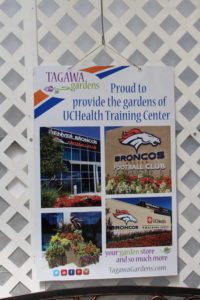Watch Your Ps!
It wouldn’t hurt even the successful garden centers to check their Ps every now and again to see where new opportunities might lie.
Unless you live in a monastery, you more than likely heard the obnoxious, repetitive TV commercials that ran on virtually every TV station in January. They showed screaming consumers looking at heavily discounted ad signs and at an outflow of advertising flyers streaming out of their mailboxes. The commercials ended with a JCP (JCPenney) tagline and the “2.1.12” date on the final screen shot. By the end of January, it was as if everyone in America had been subjected to a form of Chinese water torture but everyone was still anxiously waiting to see what happened on February 1; ideally the ads would cease and one could discover the meaning of this momentous date.
These teaser ads set the stage for the introduction of the new strategic positioning for the venerable 125 year old JCPenney chain. Allow me to provide a little flavor to where they were, why they are making these changes, and where they hope to end up.
Department Store Rebranding
Way back when, JCPenney, Sears, and the now defunct Montgomery Ward chains were the dominant retail chains in the United States. And, at one point in time, these chains were the major retailers of lawn and garden products, including live goods! Almost all traditional department stores were high end, while dollar stores, home improvement chains or discount mass marketers such as Target or Walmart were nonexistent. These three chains cast the broadest net over consumers and had a well-defined niche as there playing field.
But then the marketplace started to change, and these retail behemoths didn’t react fast enough or change their positioning deep enough to adapt to the new marketplaces that evolved. The major discounters Walmart, Target and Kmart took away major chunks of business from them at the low end. Category killers such as Lowes, Home Depot, and Toys R’ Us took away other chunks. And traditional department stores started to add more moderately priced product lines and become more promotional, taking away even more chunks of sales. Montgomery Wards couldn’t survive, Sears/Kmart is a shell of its former self, and JCPenney was treading water, barely surviving with little market direction
or growth.
Fast forward to late 2011. The JCPenney Board of Directors announced Ron Johnson as the new CEO. Ron has quite a retail pedigree. He cut his teeth with Target and rose to Senior VP of merchandising. He’s been credited with bringing architect/designer Peter Graves into their merchandise mix and positioning Target as the trendy cheap chic discounter image they currently enjoy. Ron’s next achievement was developing and implementing the Apple Store concept that has set the bar for innovation and extreme customer experience and service.
The mandate given to Ron was not to change JCPenney, but transform it as a company change denoted moderate changes over time to an existing business model; transformation denoted a total re-building and re-branding, creating a new business model for the future. With the assistance of Michael Francis, formerly the head of Target’s marketing strategies, as the new President of JCP, Ron announced some key initiatives that would help define the new JCPenney:
Focus on ‘fair and square’ pricing by eliminating most of the almost 600 promotional events JCPenney ran in 2011 with high/low pricing and going to an everyday low price model. Those obnoxious ads in January were the harbinger to a nearly 40 percent reduction in everyday retail price points in all product categories on 2.1.12.
The stores within a store concept while this won’t be completely implemented until 2013 or early 2014, the vision is to establish a new merchandise and floor plan that revolves around 100 brand oriented shops throughout the store, and a renewed focus on national brand merchandise.
New high levels of customer service though staffing and technology will play a major role in this initiative, taking the emphasis off of company driven promotions and letting the customer shop when it’s convenient for her is an integral element, too.
Defining the customer experience will support the recognition that it’s not just about the product, but what value the product can provide the customer.
We’ve all been taught about the importance of the basic tenets of marketing success that focus on Product, Price, Place and Promotion, all of which are company-centric in nature and control.
Ps For Change
In past columns, I’ve built a case for adding Passion and Pride to this alphabet soup, which is especially critical to our industry. As the marketplace becomes so much more competitive, and in response to the ever-changing consumer behaviors and purchase drivers, I’d offer that there are some additional Ps for consideration Ps that are more customer-centric than the original four. These are Preference, Portion of budget, and Permanence of relationship.
It’s interesting to note that in the strategic transformation that Ron Johnson is implementing at JCPenney, each and every one of the Ps, new and old, are being redefined. Each P by itself is important, but when you combine the impact of focuses or changes to multiple Ps simultaneously, the results are exponential!
Let’s do a fast review of my expanded list of Ps:
Product: it’s more than just physical product. It’s the image and perception, the relevance you communicate, your sustainability story, the experiential impact of the product itself.
Price: price value is more important to most consumers than just price point. What’s the value of a solution to a problem, enhanced beauty or lifestyle, increased satisfaction and success with their purchase?
Place: it’s more than presentation and display; it incorporates information needed to make the purchase easy and the right solution to the customer’s needs. In today’s world, place has expanded to where you are on the Internet and on social media platforms.
Promotion: it shouldn’t be looked at as just product advertising at a price. It should include the total customer communication and message delivery network. It’s the appearance of your store, the parking lot, your landscaping. It’s the education and expertise you offer, the community PR activities you’re involved in.
Passion: you have a passion for the product you work with and the work you do. Don’t be reluctant to share your passion with your customers. The more passionate they become, the more loyalty they have to you, and the more involved they become, making them advocates for our industry and your store.
Pride: though somewhat aligned with Passion, it’s more related to the cleanliness of your facility, the attention you give to your customers, the summation of many small things that add
up to what your company culture is all about
to outsiders.
Preference: doing whatever is necessary to become the retailer of choice and the development of loyalty.
Portion of budget: a function of the relevancy of our products and your store; providing solutions to the customer’s wants and needs.
Permanence of relationship: the creation
of individual and emotional relationships with your customers.
In light of what JCPenney is embarking upon, there’s a lot of inherent risk in transforming or totally reinventing your business model. But for them, it was either transform or perish because they were rapidly losing relevancy with the consumer and had no real direction. Things might not be as dire for you, but it wouldn’t hurt even the successful garden centers to check their Ps every now and again to see where new opportunities might lie…


















 Videos
Videos





